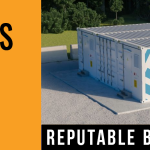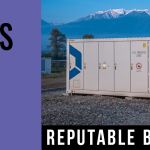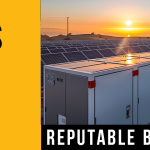 The economics of rural electrification using microgrids should be considered an investment for the future, akin to how Silicon Valley tech providers plough money into initially loss-leading products and services, the chief of developer and manufacturer Solar Philippines has said.
The economics of rural electrification using microgrids should be considered an investment for the future, akin to how Silicon Valley tech providers plough money into initially loss-leading products and services, the chief of developer and manufacturer Solar Philippines has said.
Last week, Tom Kenning, deputy editor at our sister site PV Tech, wrote an extensive and in-depth blog from a field visit to Paluan on the island of Mindoro, where a Solar Philippines offshoot company, SPSB (Solar Para Sa Bayan – ‘Solar for the country’), has executed a microgrid project that brings power to about 3,000 customers. The microgrid, which uses solar, batteries and diesel backup, is also anticipated to slash commercial electricity costs by half for local businesses.
From having just 3-8 hours of usable electricity each day, with a connection to a 5MW diesel plant some 30km away disconnected a decade ago due to transmission issues, the villagers will be able to run their homes and businesses from the new 2MW PV and 1.8MW / 1.5MWh energy storage plant, coupled with 1,260kW of diesel generation.
Solar Philippines has aggressively set about developing and executing large-scale and microgrid projects in the country as well as establishing PV module manufacturing capabilities. Company chief Leandro Leviste, son of a prominent senator, is enthusiastic about microgrids, while all of the local residents PV Tech spoke with seemed similarly enthused about the endeavour.
Leviste said that the downward trajectory of battery and PV module prices means microgrids for rural power access will reach economic viability sooner rather than later. In the meantime, he said, companies like his might have to be prepared to invest in scaling the technology to meet tomorrow’s demand rather than making projects capable of delivering big returns today.
read more
 Unveiled today (26 November), the 3MW system will enable Arsenal to cut electricity bills and avoid peak power prices. Developed by Pivot Power, the 3.7MWh system can power the club’s Emirates Stadium in North London for an entire match – equivalent to powering 2,700 homes for two hours.
Unveiled today (26 November), the 3MW system will enable Arsenal to cut electricity bills and avoid peak power prices. Developed by Pivot Power, the 3.7MWh system can power the club’s Emirates Stadium in North London for an entire match – equivalent to powering 2,700 homes for two hours. German frequency response service revenues have dropped almost two-thirds in two years as utilities have rushed to deploy energy storage, research shows.
German frequency response service revenues have dropped almost two-thirds in two years as utilities have rushed to deploy energy storage, research shows. Scale Microgrid Solutions is on a mission to make sophisticated microgrids as easy to deploy and finance as rooftop solar, said Timothy Hade, microgrid specialist for the company.
Scale Microgrid Solutions is on a mission to make sophisticated microgrids as easy to deploy and finance as rooftop solar, said Timothy Hade, microgrid specialist for the company. Among other diversified topics, the sessions will deal with current findings on test procedures, problems with energy storage usage, safety and protection for batteries as well as new technologies such as ceramic batteries. The conferences include the 8th Energy Storage Europe Conference (ESE) of Messe Düsseldorf and the 13th International Renewable Energy Storage Conference (IRES) of EUROSOLAR e.V. and will take place parallel to the exhibition.
Among other diversified topics, the sessions will deal with current findings on test procedures, problems with energy storage usage, safety and protection for batteries as well as new technologies such as ceramic batteries. The conferences include the 8th Energy Storage Europe Conference (ESE) of Messe Düsseldorf and the 13th International Renewable Energy Storage Conference (IRES) of EUROSOLAR e.V. and will take place parallel to the exhibition. NEC Energy Solutions has secured two engineering, procurement and construction (EPC) contracts from Gore Street Energy Storage Fund for UK energy storage projects.
NEC Energy Solutions has secured two engineering, procurement and construction (EPC) contracts from Gore Street Energy Storage Fund for UK energy storage projects. Energy storage, rooftop solar panels and LEED construction used to be expensive, customized options for wealthier homeowners, but they are rapidly going mainstream. The combination of experience, economies of scale and advanced technology is making it possible for more home buyers — and renters — to live a low-carbon life. A case in point is a new Google Home-enabled partnership between two leading companies in the sustainability field,
Energy storage, rooftop solar panels and LEED construction used to be expensive, customized options for wealthier homeowners, but they are rapidly going mainstream. The combination of experience, economies of scale and advanced technology is making it possible for more home buyers — and renters — to live a low-carbon life. A case in point is a new Google Home-enabled partnership between two leading companies in the sustainability field,  The market for energy storage is rapidly gaining momentum around the world. The growing cost-competitiveness of carbon-free energy sources, coupled with improving technology and more environmentally conscious government policies are driving a demand boom for batteries in both the transportation and utility power sectors. But just how big is this boom expected to be?
The market for energy storage is rapidly gaining momentum around the world. The growing cost-competitiveness of carbon-free energy sources, coupled with improving technology and more environmentally conscious government policies are driving a demand boom for batteries in both the transportation and utility power sectors. But just how big is this boom expected to be?



